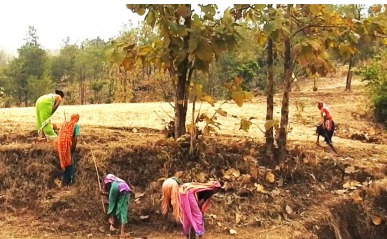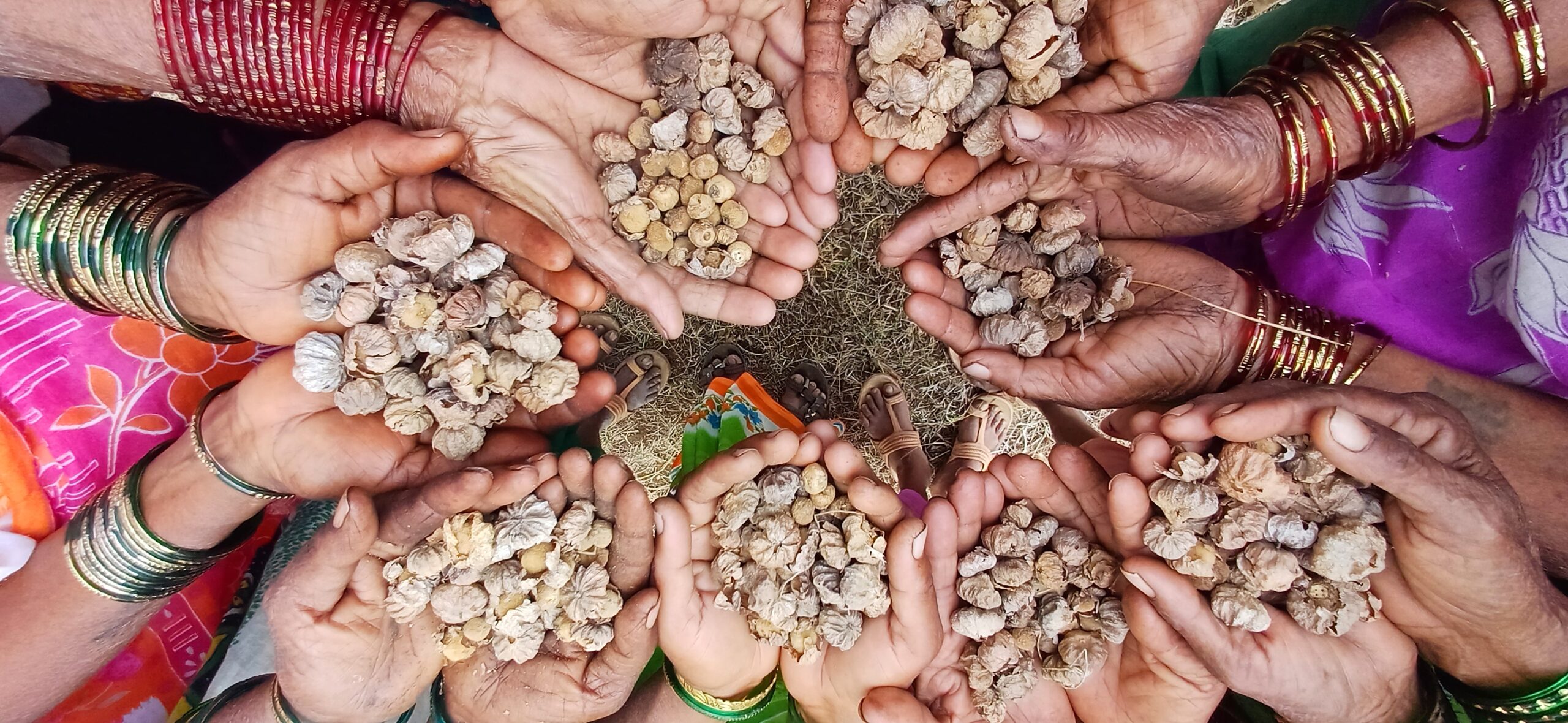A seed to sustainability!
Their smile was infectious and so was their simplicity!

A quick work visit took me to a tiny village called Khoripada in Nashik district. At around 12PM, breeze was cooler. As I spoke with the tribal women of Khoripada, a cheerful tone of conversation was quickly set.
Two years back, when we started our ecological restoration programme in Nashik-rural division, we adapted strategic approach to the ecosystem recreation and rejuvenation process. The projection of restorable land in next six years was 50,000 acres. The community engagement and development were integral parts of the project.
Amongst the multiple important aspects, the consistent and qualitative supply of native saplings was the critical one. The local and native species were the highest priority, their thriving and sustaining capacity being much higher. The easier solution was to collaborate with large scale nurseries and get the saplings. But we decided to go the traditional way.
Since many many years, the rurals followed the tradition of collecting seeds of trees, vegetables, and plants. These seeds were stored in variety of containers made of mud, bamboo or simple jute bags. Seeds were then not only used for regeneration, but excess quantities were sold in local markets for small additional income
Once our approach firmed up, our team was out on a mission to search the villages in and around Nashik
who are willing to work with us and supply the seeds. In this quest, we met Mr Shankar Shinde from Khoripada village, lovingly called as Shankar baba. With his help, we approached a small self-help group of tribal women. We had a lively chat with them and shared our purpose. They happily agreed. It was win-win for both of us as seeds that will otherwise drift away in rains will be put to right use and women will earn livelihood.

Finishing all the morning chores, we headed to forest with the women. The seed collection process was not as easy as it seemed. The terrain was mix of high, low and rough lands. To search for the seeds through mulch was risky as the forest hosted wide variety of wildlife. But the women were rock solid. They knew how to be out of harm’s way by simply abiding by the rules of nature well. As their traditional melodies permeated along the way, all the fear was gone.
Knowing the seasonality of species and recognizing the right time and right seeds, were the skills they had naturally acquired. We could trace ample variety of shapes, colours and sizes of seeds. The flat papery-winged seeds of Indian Trumpet tree often travel some distance like butterflies as the long pods bursts. Nature’s phenomenal mechanisms to regenerate itself left us in awe.

These tribal women not only collect variety of seeds of native species but also aggressively protect rare species like Padre tree pods as they are popular vegetable too. The seeds of Saag, Behda, Sadadfal and many other trees collected through multiple forest visits are then stored in thick jute bags to avoid any spoilage.
We at regular intervals keep collecting seeds from them and pay them off as per the mutual agreements. These seeds are then
passed on to the local Agro Nursery. Some part of the lot is converted to seed balls to spread out in difficult terrains of mountains. Others are utilized to generate saplings. These saplings are then used for the plantation work at the stipulated site. We also have started a seed bank where all seeds that are collected are catalogued and inventoried.
The process has been a great success, and we look forward to collaborating with more such villages, actively engaging the local communities and encouraging them to be stewards of the ecosystem conservation and restoration process.
As we moved through the process of seed collection,
the ecologist from our team pointed out some
changed patterns of flowering and fruiting. A
phenomenon of flowering and gradually maturing to
fruits during seasons, scientifically being termed as
‘Phenology’, were observed to face consequences of
climate change in some of the species. Trees of
Cassia Fistula, for example, are flowering in some
region, in some they are yet to flower whereas some
trees have matured pods already. All this is in one
forest. The worsening effects of climate change
motivated us even more, to do more what we do.

With every village, starts a journey of dream, from a seed to sapling, to a sustainable tomorrow!

